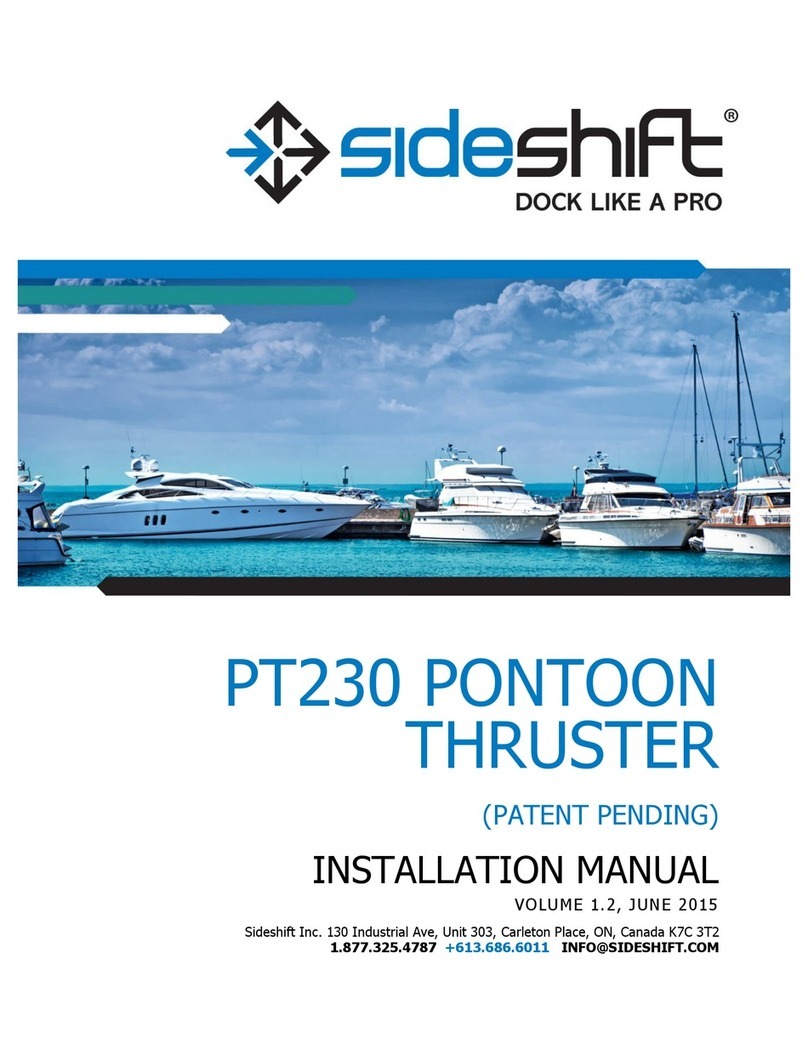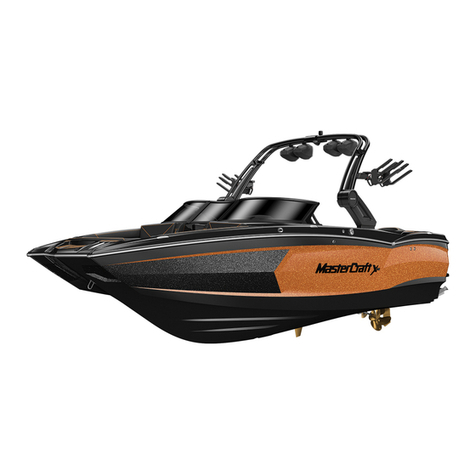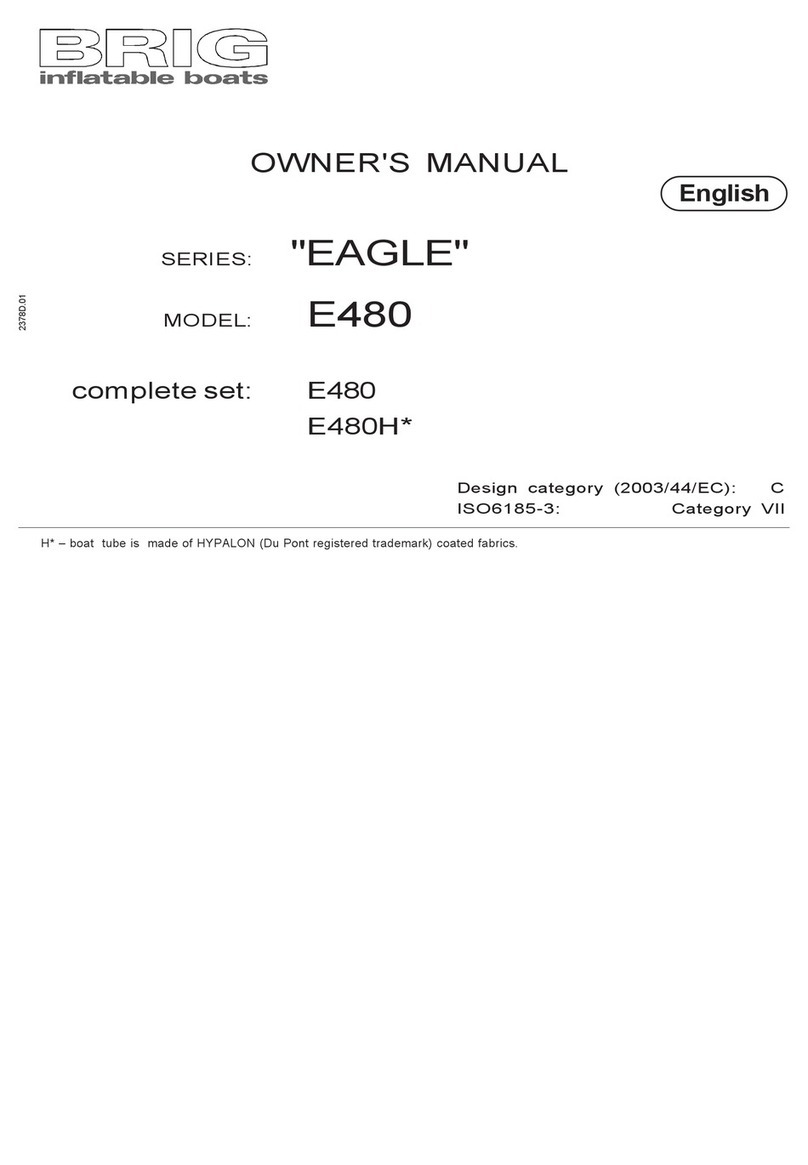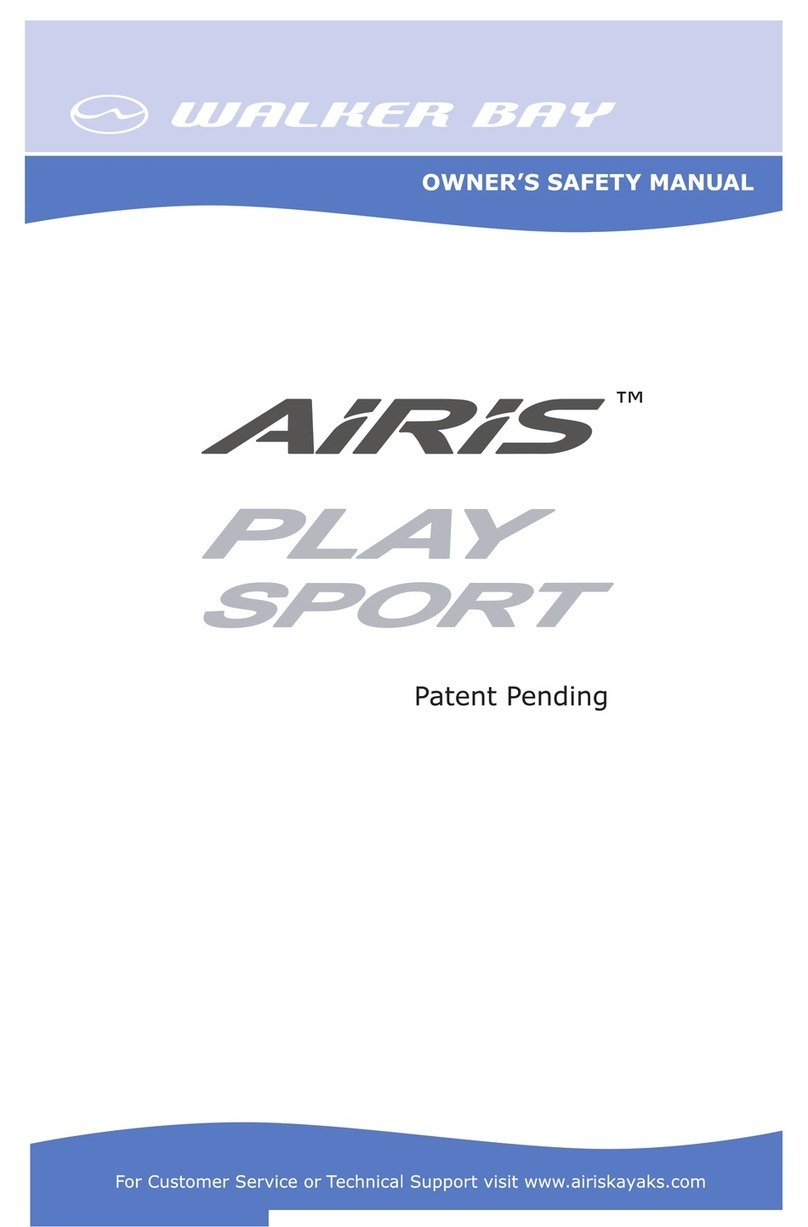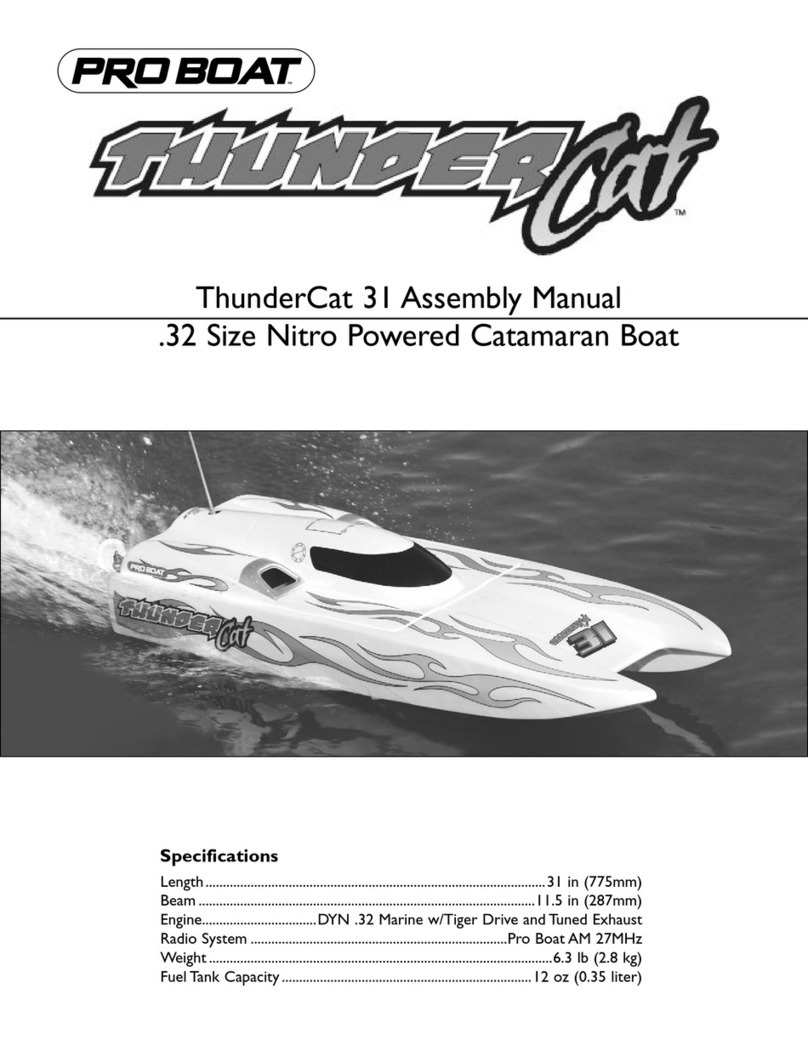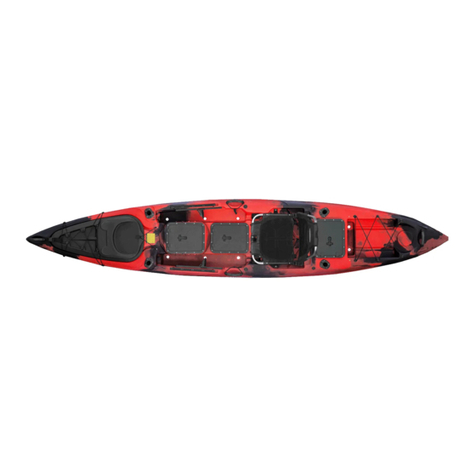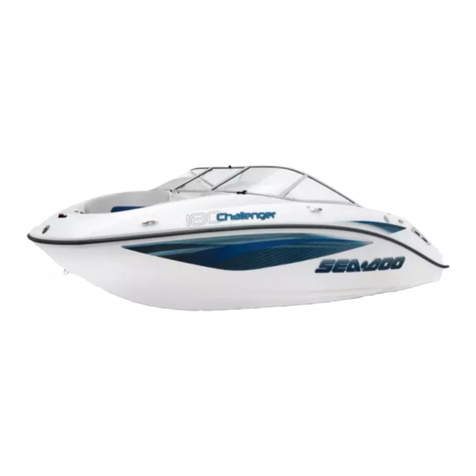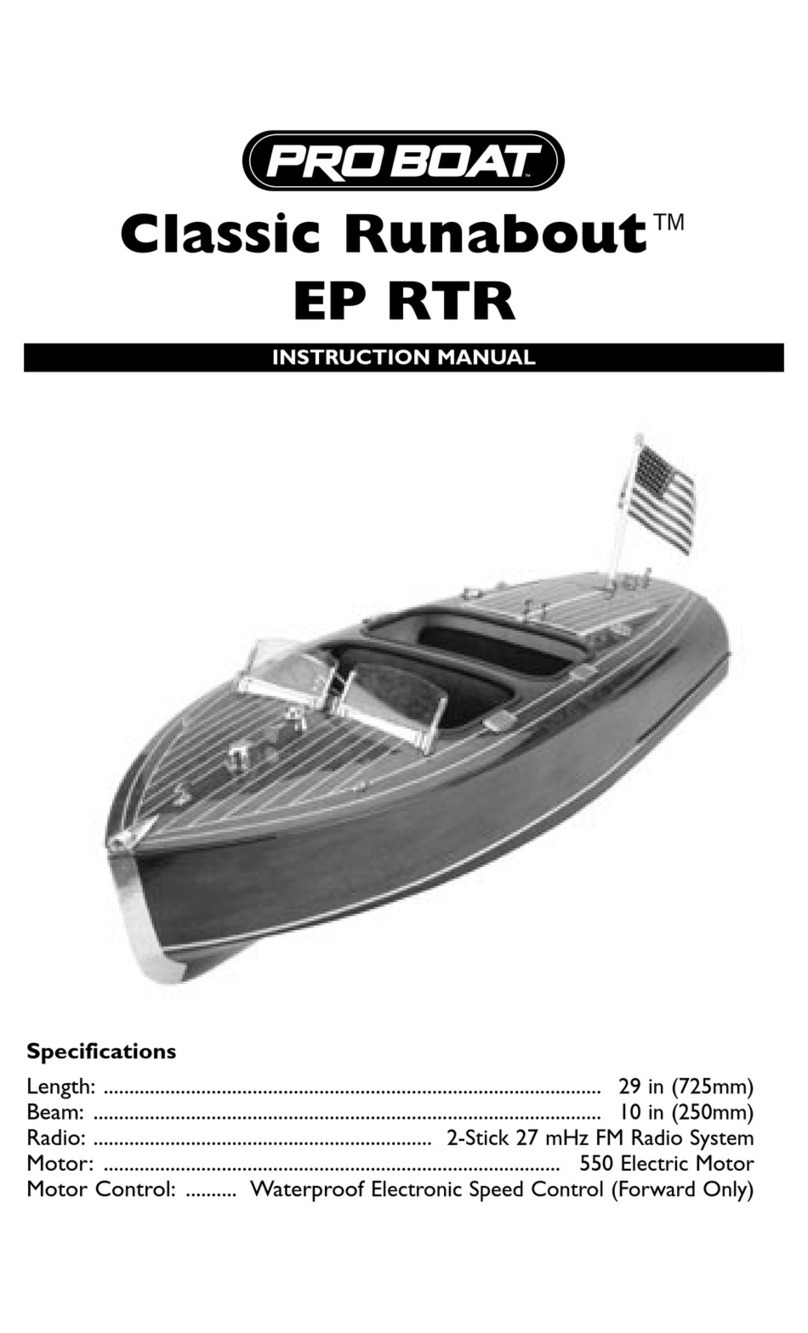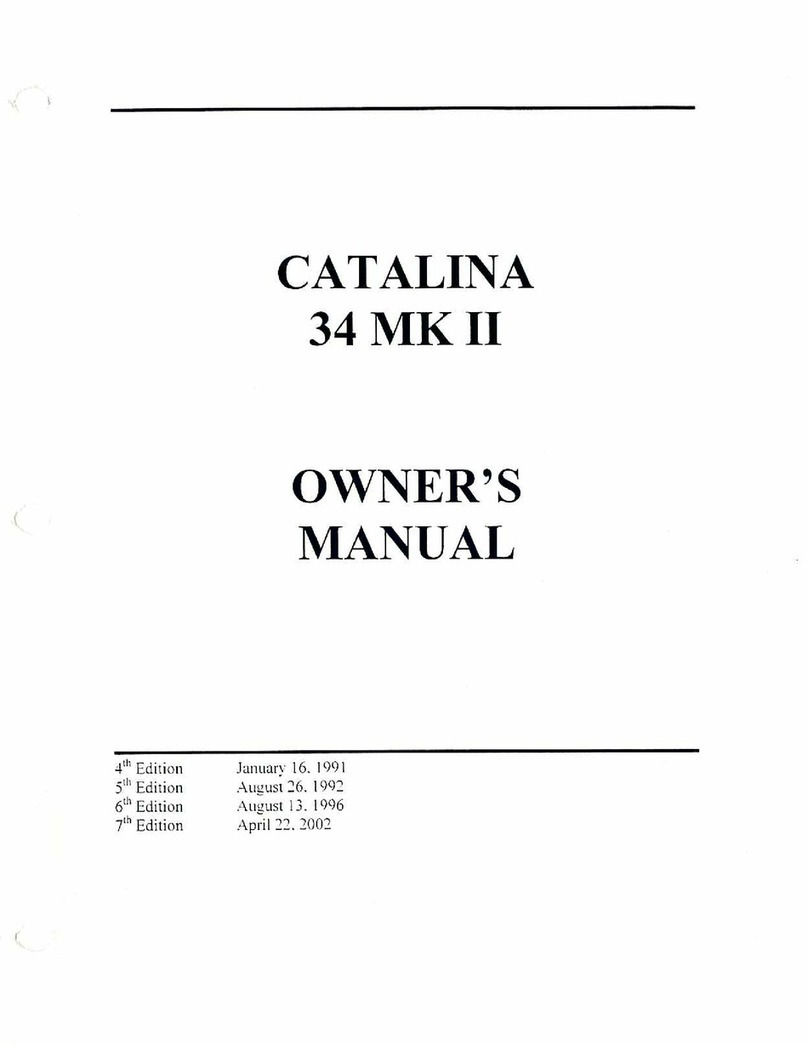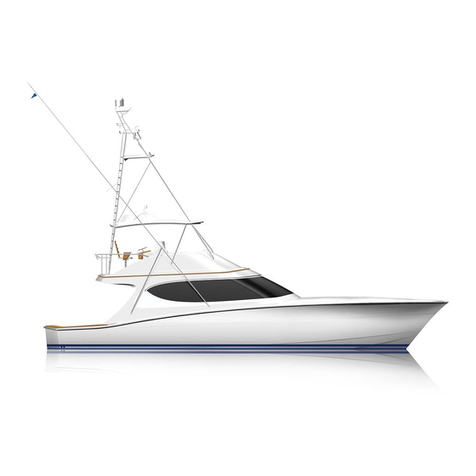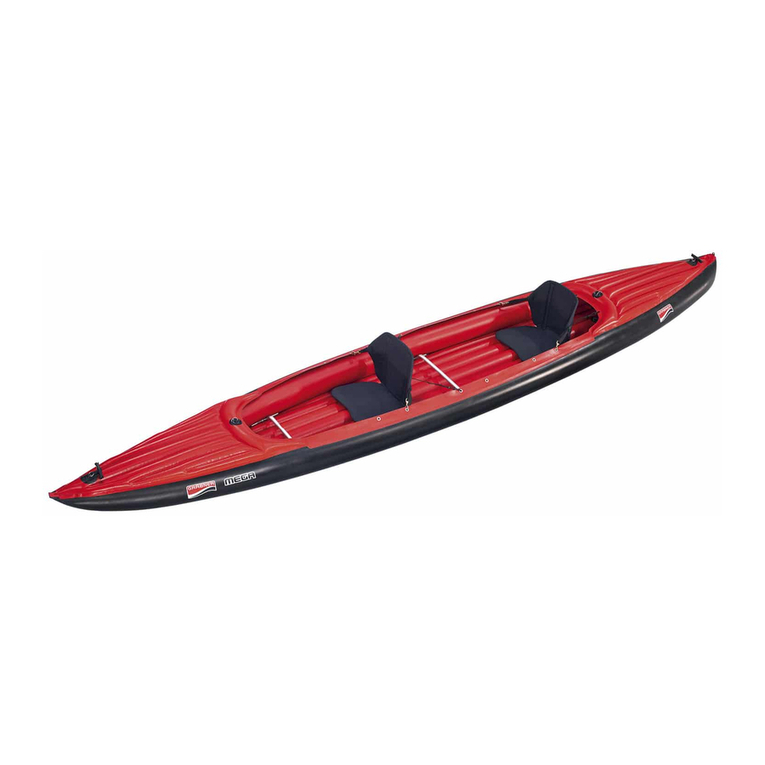Sideshift HB350 User manual

HOUSEBOAT THRUSTER
HB340/350 SERIES
(PATENT PENDING)
INSTALLATION/OPERATION
MANUAL
VOLUME 1.9, APRIL 2017
Sideshift Inc. 130 Industrial Ave, Unit 303, Carleton Place, ON, Canada K7C 3T2
1.877.325.4787 +613.686.6011 INFO@SIDESHIFT.COM

SIDESHIFT INSTALLATION GUIDE V1.9
1
INTRODUCTION
Thank you for your purchase of a Sideshift thruster system.
Sideshift thrusters are designed for easy installation by anyone with basic mechanical
and electrical skills.
This manual explains everything you need to know about installing your Sideshift
thruster.
We also provide unlimited telephone support at
1.877.325.4787.
Also see our website for helpful installation videos at
sideshift.com/choose-sideshift/videos/videos/.
This manual explains the mounting and operation of the HB340/HB350 Houseboat
Thruster system. We recommend that you familiarize yourself with this complete
manual before starting your installation.

SIDESHIFT INSTALLATION GUIDE V1.9
2
Safety warnings
WARNING: To prevent overheating when operating the Sideshift
thruster, run for a maximum of 20-30 seconds at a time,
then allow to cool for at least 10 seconds before further
operation.
WARNING: Ensure thruster battery switch is turned off when conducting
maintenance and repair of the thruster.
WARNING: Use extreme caution when swimmers are in the area of the thruster.
Turn off ignition and avoid contact with thruster props when boat is
stationary.
WARNING: When operating out-of-water do not run thruster for longer than
5 seconds to prevent overheating.
WARNING: If conducting an in-water installation, use a cordless drill only, as a
corded drill can present an electrocution hazard.
Required Tools
Heat gun
3/8” drive cordless driver
3/8” hex socket
Wire stripper
Wire crimper
SAE wrench set 3/8” to 3/4”
Pliers
Drill bits up to ½”
Caulking gun
Marine sealant
1 ¼” and 2 ½” hole saw

SIDESHIFT INSTALLATION GUIDE V1.9
3
Parts List
Item
Photo
Purpose
Single Wireless Joystick
Raise, lower and control
thruster.
Dual Wireless Joystick
Controls bow and stern thruster
on a single console for one-hand
operation
Wireless Control Module
Wireless receiver and control
interface between joystick and
motor controller.

SIDESHIFT INSTALLATION GUIDE V1.9
4
Motor Control Module
Relays commands from joystick,
delivering high current from
battery to motor.
Anti-seize
Prevents screw and bolt threads
from seizing, facilitating easier
assembly and disassembly.
Heat shrink tubes
(sufficient for all cables
attached to motor
controller. Cut to size)
Provides waterproofing for cable
at battery terminals.
Terminal protectors
Protects terminals from moisture
and prevents shorts.

SIDESHIFT INSTALLATION GUIDE V1.9
5
Compression terminals
Connects cables to motor
controller. Select size according
to wire gauge used.
Wireless Remote
Controls thruster remotely
Battery Switch
On/Off switch for thruster
batteries
Fuse/Digital Voltage
Indicator
Fuse protection and digital
voltage monitor

SIDESHIFT INSTALLATION GUIDE V1.9
6
INSTALLATION INSTRUCTIONS
Sideshift thrusters can be installed with the boat in water or on land, although land-
based installation is easier.
Get an overview of the electrical installation procedures by viewing the installation
videos for our PT230 Pontoon Thruster and our SS/ST series Bow and Stern thruster
products on-line at sideshift.com/choose-sideshift/videos/videos/.
HB340/350 Bow Thruster Placement
The thruster is designed to be positioned on the underside bow of any pontoon-style
or flat-bottom style houseboat. Position the unit centrally or off-center, and as far
forward as possible for best performance.
Proper side clearance for good performance

SIDESHIFT INSTALLATION GUIDE V1.9
7
The thruster mounting surface can be a maximum of 24” from the water. If the
mounting surface is more than 24” above the water, a mounting bracket will need to
be created to provide a lower mounting surface. See example below:

SIDESHIFT INSTALLATION GUIDE V1.9
8
Step-By-Step Instructions:
STEP 1: DETERMINE A MOUNTING SURFACE WITH A MINIMUM OF
¼” ALUMINUM OR STEEL RIGID PLATING
OR
ATTACH
RAILS TO FORM AN APPROPRIATE MOUNTING PLATFORM
The unit has pre-drilled mounting slots to accommodate 16” or 24”
centers. In some installations it will be necessary to drill through the
thruster mounting plate to fit centers other than 24”, or to attach to
mounting rails. Use a ¼” drill bit to drill the mounting plate.
NOTE: You will require a helper for Step 2
STEP 2: POSITION THRUSTER AND ATTACH TO UNDERSIDE OF
DECK
Using a helper, position the thruster in place, and using the supplied self—
drilling/self-tapping 1 ¼” stainless hex-head mounting screws, apply a small amount
of supplied Loctite to the threads and drive the screws into the mounting surface at
the appropriate location. Pilot holes are not required. Two screws are required at
the front and two at the back of the unit.

SIDESHIFT INSTALLATION GUIDE V1.9
9
STEP 3: FEED THRUSTER CABLES THROUGH DECK AND CONNECT
TO BATTERY SWITCH, FUSE AND MOTOR CONTROL
MODULE(REFER TO SCHEMATICS ON PG 10/11)
Determine a location for the motor control module and thruster batteries in a dry
storage area close to the thruster.
Using a 1 ¼” hole saw, drill holes at appropriate locations for routing of the thruster
cables.
Feed the thruster cables into the storage location.
Connect the motor control cables to a dedicated 12v(HB340) or 24v (HB350) battery
bank(see page 11).
WARNING: Verify that hole placement will not interfere with or damage
anything when drilling through the deck and storage location, and
that there is sufficient space so that cables can be accessed after
passing through the proposed hole location.
WARNING: Ensure the control module is located in a dry storage area

SIDESHIFT INSTALLATION GUIDE V1.9
10
INSTALLATION INSTRUCTIONS
–ELECTRICAL
Schematic –HB350 24V System

SIDESHIFT INSTALLATION GUIDE V1.9
11
Schematic –HB340 12V System
Due to the high current draw, Sideshift thrusters must be supplied with dedicated
12v starter-type batteries for each thruster.
WARNING: High currents can result in reduced voltage supply to the thruster if
improper cable, connectors and/or assembly procedures are used.
This can result in poor performance or damage to the thruster
motor.
WARNING: Ensure the dedicated thruster batteries are fully charged and load
tested. Low battery voltage can result in erratic actuator
performance(actuator arm will not extend or retract properly) and
poor thruster performance or damage to the thruster motor.

SIDESHIFT INSTALLATION GUIDE V1.9
12
Battery Requirements
Starter type batteries(not deep cycle) are required for optimal performance. The
batteries supplying the thruster must be capable of meeting the required CCA (Cold
Crank Amps), as outlined in Table 1: Required Battery Characteristics. Insufficient
battery capacity will lead to poor thruster performance.
Model
Qty
Voltage
Total CCA (A)
HB340
2
12 V
1700
HB350
2
24 V
850
Table 1: Required Battery Characteristics
Warning: It is essential that the cold cranking ampere (CCA)
requirements are met as outlined in the table above.
Ensure batteries are load tested and properly charged at all
times to avoid performance problems and thruster motor
damage due to low voltage
Batteries must be installed as close to the motor controller as possible for optimum
performance. If you are installing batteries in a non-ventilated area you will need to
use AGM (absorbed glass mat) sealed batteries or sealed combination (starter/deep
cycle) batteries. In ventilated areas, you can install flooded starting batteries or
unsealed combination (starter/deep cycle) batteries.
BATTERY CAPACITY AND AGE
Under normal circumstances with new and fully charged batteries, you can expect
around 50 thruster cycles before the battery must be recharged.
It is advisable to recharge batteries after each use if possible, to extend the life of
the battery.
As batteries age and with repeated charge cycles, the battery slowly loses its ability
to hold charge. The deeper the discharge before recharging, the shorter the life of
the battery. Over time it will be able to supply fewer thruster cycles before it
requires recharging and eventually will lack the capacity to allow proper thruster
performance.
Capacity reduces to the point that performance is poor or few thrust cycles are
available before recharging, and the batteries must be replaced.

SIDESHIFT INSTALLATION GUIDE V1.9
13
BATTERY STORAGE
Over time, batteries self-discharge, even when disconnected. Some new batteries
may have a self-discharge of 1-2% per month, but depending on the type and age
of the battery, it can rise to 6% per month or more.
If the battery is coated with moist dirt and corrosion by-products, discharge rates
can be even higher. Make sure the battery is clean and free of dirt and corrosion on
and around the terminals.
If the battery is a flooded type, top up the electrolyte, ensuring that it is above the
plates and below the vent cap well.
Fully charge the battery before storage, and store in a cool, dry place. Cooler
batteries will self-discharge at a lower rate than warm batteries.
Check the terminal voltage of the battery periodically using the digital
voltmeter located on the fuse holder. When the terminal voltage drops below
12.4 volts (75% capacity), charge it until fully charged. More frequent charging is
preferred if convenient. It is recommended to charge the battery every three
months.
Note that as charge capacity decreases, the freezing point of the electrolyte
increases. This is important because the electrolyte must not be allowed to freeze.
At 62% capacity, the freezing point is -26.5°C/-16°F; at 85% capacity, it is -52°C/-
62°F.
CONNECTING BATTERIES IN PARALLEL TO BOOST CCA
You can double the CCA supplied from a single battery by connecting a second
battery in parallel to the first. You may prefer this alternative to buying a larger
single battery with the required CCA rating.
Figure 1: Two batteries in parallel, doubling CCA

SIDESHIFT INSTALLATION GUIDE V1.9
14
If you use a parallel configuration, the two batteries must be identical: same rating
and same manufacturer and ideally new batteries, or at least operated as a pair for
their entire service life. Each battery must be charged separately before installing to
ensure they start at the same charge level. Batteries which are dissimilar in any way
may not charge and discharge equally, leaving one battery undercharged.
To connect two batteries in parallel, prepare two shunt cables of the same gauge
used to connect the batteries to the motor controller. Connect the positive post of
one battery to the positive post of the other and the negative post of one battery to
the negative post of the other.
One post will share two compression terminals: the shunt and the cable to the motor
controller.
24 VOLT BATTERIES
24 volt batteries are less common than 12 volt batteries. You may find it more
convenient and less expensive to use two 12V batteries in series. If required, you
can use four batteries, with two sets of series-connected batteries in parallel to
supply the required CCA.
Figure 2: Two 12 V batteries in series, providing 24 V
To connect two batteries in series, connect the negative post of one battery to the
positive post of another using a short piece of battery cable of the same gauge used
to connect the batteries to the motor controller. The two remaining posts are each
connected to the motor controller using two battery cables, supplying 24V.

SIDESHIFT INSTALLATION GUIDE V1.9
15
PREPARING SHUNT CABLES
To prepare a shunt cable:
STEP 1: ARRANGE BATTERIES
You may choose to arrange batteries in different ways: side by side, end to end etc.
For a parallel CCA-boasting configuration, arrange the two batteries so the positive
and negative posts of each battery are on the same side as the other, as shown in
Figure 1.
STEP 2: MEASURE CABLE
Cut cable or cables to length based on the battery arrangement chosen in Step 1
above.
You need one shunt cable for series configuration and two for parallel configuration,
as explained in the Connecting Batteries in Parallel to Boost CCA and 24 Volt
Batteries sections above.
STEP 3: INSTALL COMPRESSION TERMINALS
Slip shrink tube past both ends of each cable then attach compression terminals, as
explained in How To Install Compression Terminals on page 19.
Slip shrink tube over shaft of compression terminal, leaving the ring exposed.
Apply heat evenly to the shrink tube until it forms a tight seal around the terminal
and cable.

SIDESHIFT INSTALLATION GUIDE V1.9
16
USE OF EXISTING BATTERIES
Existing batteries can be used for the thruster, but this option must be considered
with caution. CCA requirements must be met, and you must consider how deeply the
batteries will be discharged before charging can occur if the thruster load is added to
the original load on the battery.
Deep Discharge Bank
If an existing bank of deep discharge batteries can supply the CCA requirements,
this could be an option if they are located close enough to the thruster being
powered. A battery at 40% capacity will supply about .8 volts less than a fully
charged battery, which will reduce performance of your thruster.
Cable and Terminal Requirements
Due to the high current load drawn by the motors, it is essential that the correct
type of cable and connectors are used, and that maximum cable length guidelines
are observed according to the gauge and thruster model. These guidelines are
summarized in the table below. The table assumes cables from the thruster to the
controller have not been shortened.
Cable must be high quality tin coated copper, marine grade cable. Cable ends must
be fitted with high grade cast copper, tin coated compression type terminals and
sealed with double wall heat shrink tubing for moisture protection.
Cables from the motor are 4 AWG. This lighter gauge of cable is used to allow for
easier routing between the motor and controller. It is essential that cable from
battery to controller is much heavier gauge or the motor will not perform properly
and could be damaged.
NOTE: SAE gauge can have up to 12% less conductor cross-section than
AWG. Use cables of equal or greater AWG as suggested below.
Thruster
Length –1/0 AWG
Max Length –2/0 AWG
HB340
40’
HB350
50’
Correct cabling and connection practices are essential to maintaining correct
operating voltage. Batteries must be fully charged before use.
Batteries are often subject to moisture and damp/corrosive conditions, therefore it
is important that the connection terminals are properly sealed to the cables using
heat shrink tubing (supplied).

SIDESHIFT INSTALLATION GUIDE V1.9
17
Compression terminal sizes match the following applications:
1&2 AWG Thruster cables
2/0 AWG Battery cable (motor controller end)
Ideally, the positive cables should be red and the negative cables black.
NOTE: If in doubt of which cable gauge to use, call Sideshift for technical
advice.
CONNECTING BATTERIES AND THRUSTER TO MOTOR
CONTROLLER
Instructions:
STEP 1: LOCATE THE MOTOR CON TROL MODULE AS CLOSE AS
POSSIBLE TO THE THRUSTER
STEP 2: CUT BATTERY CABLE TO LENGTH
Cut two lengths of marine battery cable of suitable length to reach from batteries to
controller. Note that one cable may need to be longer than the other to
accommodate the location of the battery terminals.
STEP 3: CONNECT BATTERY TO MOTOR CONTROLLER
Fit terminal protectors over each battery lead at the controller end.
Choose a compression terminal to match the cable gauge (typically 2/0 for 340/350
series models).
Install compression terminals. See How To Install Compression Terminals on page
19 for instructions.
Attach positive cable to the “BATTERY POS” post on the motor controller. Slip
battery protector over terminal.
Repeat steps for “BATTERY NEG” cable.

SIDESHIFT INSTALLATION GUIDE V1.9
18
STEP 4: CONNECT BATTERIES
Fit battery protectors and then shrink tube over each battery lead at the battery end.
Install compression terminals. See How To Install Compression Terminals on page
19 for instructions.
Attach positive cable (connected to “BATTERY POS” post on motor controller) to the
positive post of the battery. Slip battery protector over terminal.
Repeat steps for “BATTERY NEG” cable.
STEP 5: CONNECT THRUSTER TO MOTOR CONTROL MODULE
NOTE: Motor power cable polarity is not identified. If thrusters operate
in opposite direction from joystick, reverse cable
connections on motor controller.
If thruster power cables are too long, cut them to length. Be sure that they are
neatly routed, and comfortably reach the motor controller terminals. Leave some
slack to make installation easier.
Install compression terminals. See How To Install Compression Terminals on page
19 for instructions.
Connect one cable to “MOTOR 1” and the other to “MOTOR 2”.

SIDESHIFT INSTALLATION GUIDE V1.9
19
How To Install Compression Terminals
STEP 1: STRIP 1” (2.5 CM) OF INSULATION FROM EACH END OF
CABLES
NOTE: Take care when stripping insulation to avoid damaging conductor. If
some strands are removed the compression terminal will not make a
good connection possibly resulting in performance reduction, a fire
hazard or the cable pulling out of the compression terminal.
STEP 2: CHOOSE A COMPRESSION TERMINAL TO MATCH THE
CABLE GAUGE
STEP 3: LOOSEN COMPRESSION T ERMINAL NUT
STEP 4: PASS EXPOSED CONDUCTOR THROUGH NUT
STEP 5: TIGHTEN NUT WITH WRENCH
You will feel the resistance increase a bit as you tighten the nut, then
become stiff, at which point the nut is sufficiently tight. Give the terminal
a tug to make sure it is solidly attached to the cable.
STEP 6: INSTALL HEAT SHRINK TUBE
Slide shrink tube up the cable so that it covers the shaft of the terminal and the
insulation of the cable.
Apply even heat to the shrink tube using heat gun until it makes a solid seal around
the cable and terminal.
This manual suits for next models
1
Table of contents
Other Sideshift Boat manuals
